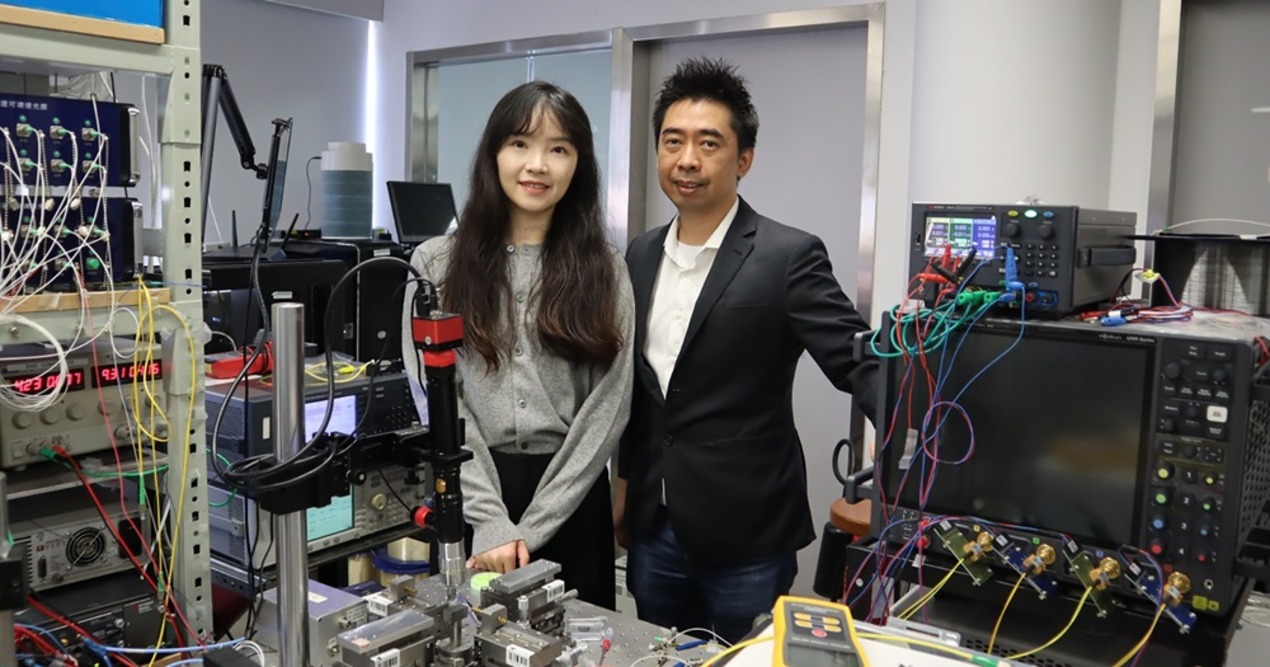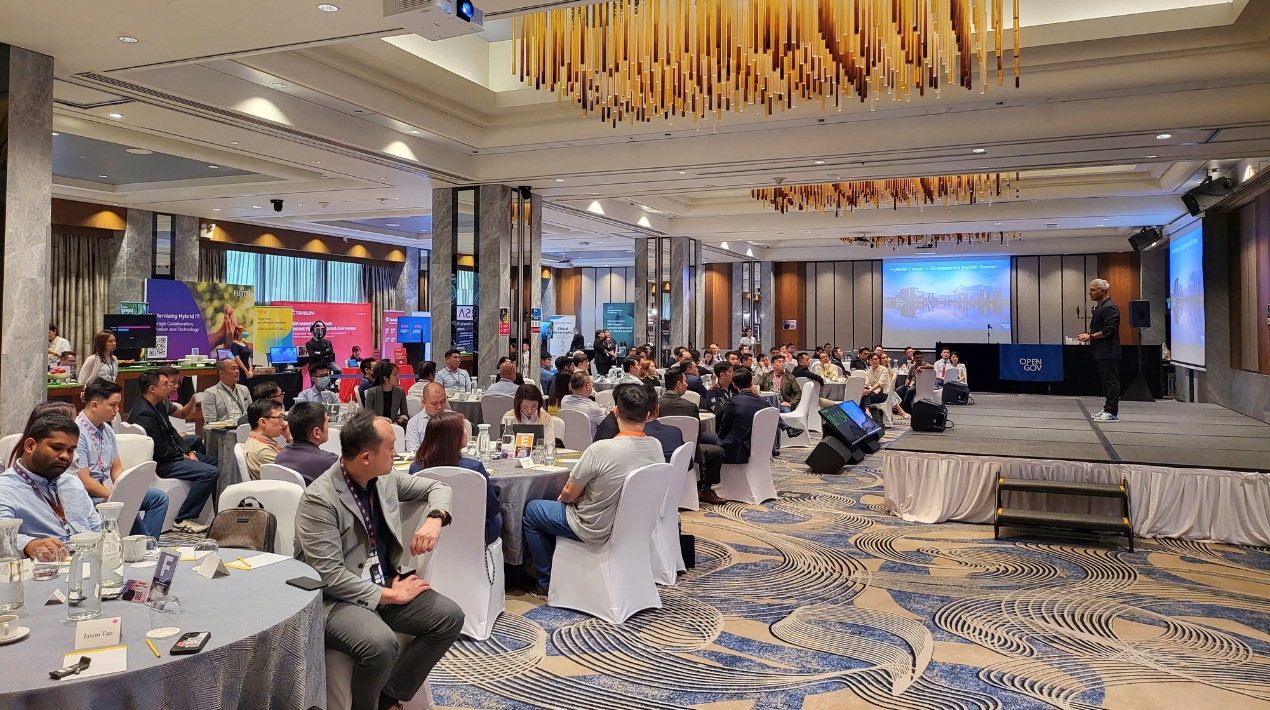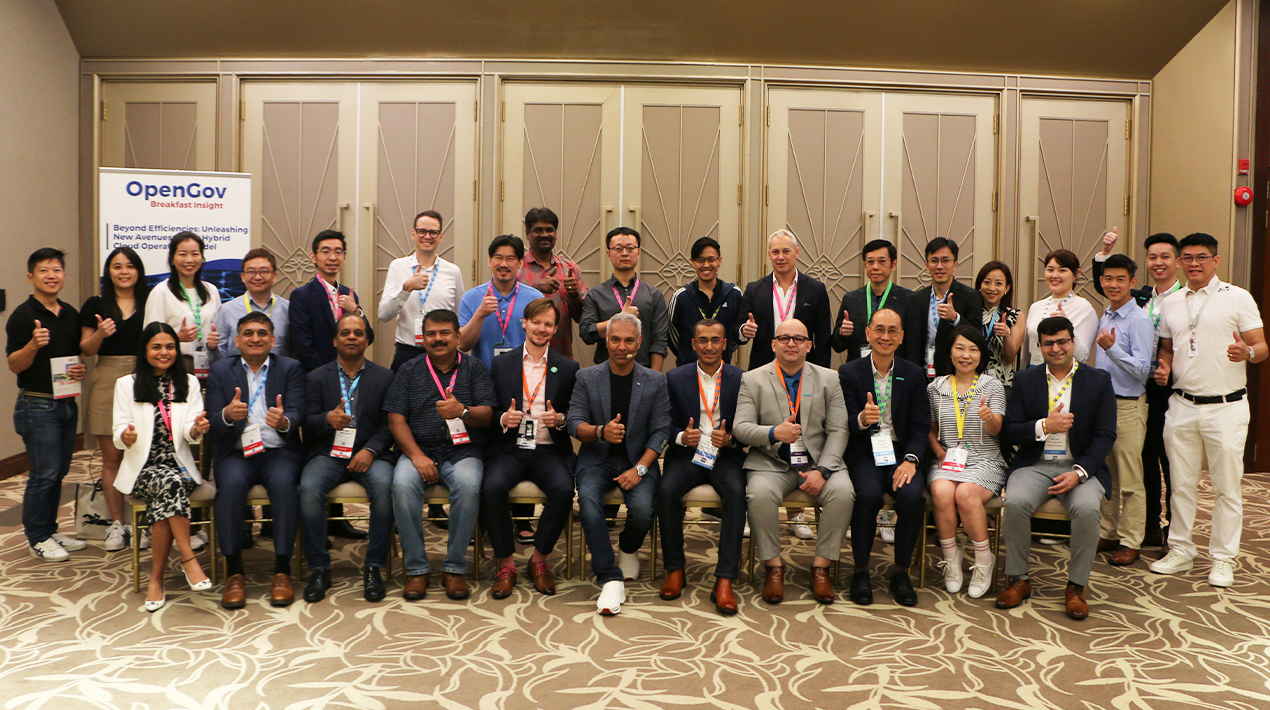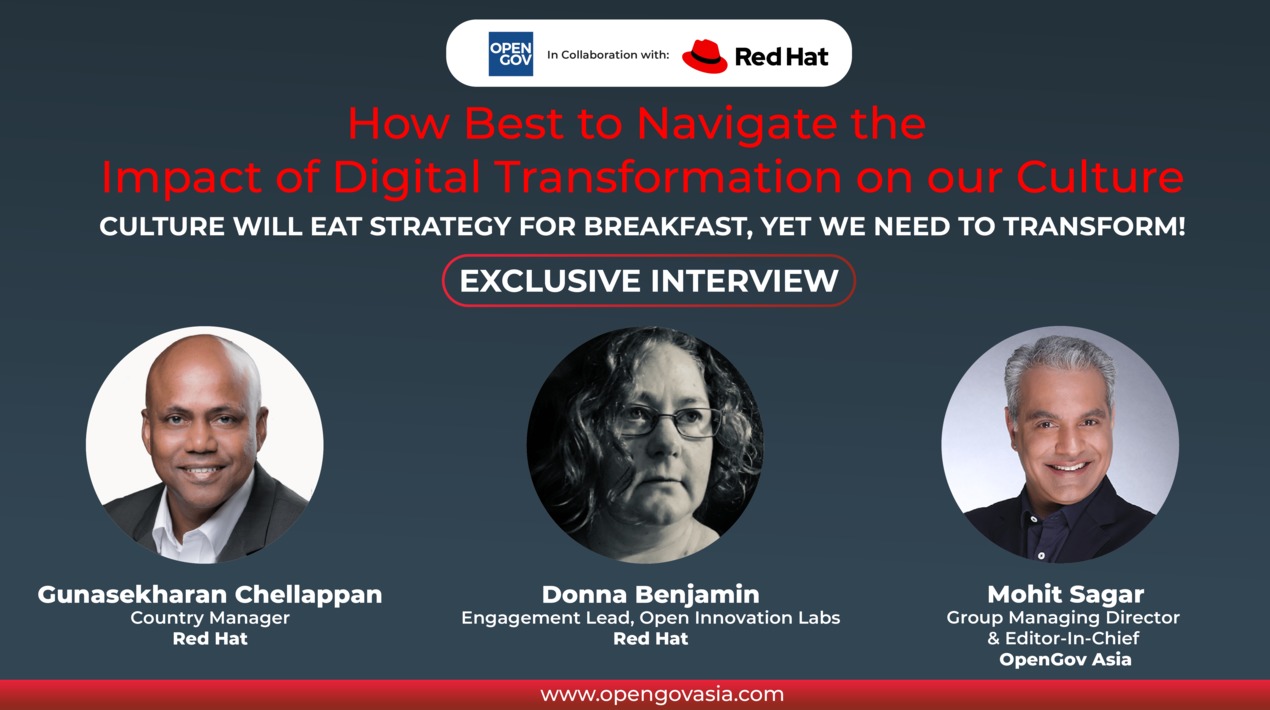
As organisations seek to redefine how they create, deliver and capture value, many are looking to digital technologies, which in turn are driving transformative changes across industries. However, the digital transformation process calls for far more than just updating technology or redesigning products.
Failure to connect the effort with employee values and behaviours can bring extra risks to an organisation’s culture. A holistic and collaborative effort can help teams shift their perspective to one where they feel empowered to embrace, and drive digital transformation.
 OpenGov Asia had the opportunity to speak exclusively to Donna Benjamin, Engagement Lead, Red Hat Open Innovation Labs in Australia and New Zealand about her perspective on how digital transformation impacts culture and vice versa.
OpenGov Asia had the opportunity to speak exclusively to Donna Benjamin, Engagement Lead, Red Hat Open Innovation Labs in Australia and New Zealand about her perspective on how digital transformation impacts culture and vice versa.
Donna’s professional career has been deeply shaped by her involvement in the global open source community. In her current role, Donna works with Red Hat customers to facilitate project success by helping them embrace an open approach to transformation.
As an engagement lead with Red Hat’s Open Innovation Labs, she is focused on supporting customers through the sustainable, resourceful and effective application of open source technology. Donna firmly believes culture plays a key role in putting strategy into practice when implementing technology solutions.
Red Hat’s Open Innovation Labs help bring people, processes and technology together. Through an immersive teaming residency, customers are armed with the skills, tools and processes to deliver better software, more quickly, to meet the demands of today’s market. Open Innovation Labs combines technical practices with cultural practices – to help teams be more collaborative and impactful.
Moreover, as part of an Open Innovation Labs consulting engagement, customers work collaboratively in direct partnership with Red Hat experts to jumpstart their innovation and software development initiatives. The aim is to help organisations meet their goals and stay ahead of competitors through the use of open source technologies.
 Red Hat has a long and established reputation for being a leader in open source technology. To fully benefit from cloud technology, Gunasekharan Chellappan, Country Manager, Singapore, believes that organisations should adopt a Hybrid Multi-Cloud strategy. With a good Hybrid Multi-Cloud strategy, tools from across the various clouds can be made to work together seamlessly.
Red Hat has a long and established reputation for being a leader in open source technology. To fully benefit from cloud technology, Gunasekharan Chellappan, Country Manager, Singapore, believes that organisations should adopt a Hybrid Multi-Cloud strategy. With a good Hybrid Multi-Cloud strategy, tools from across the various clouds can be made to work together seamlessly.
When defining success, organisations need to ensure their intention and purpose are built on their core values and vision. While this direction often comes from the top, organisations that holistically embrace open principles of inclusivity, adaptability, transparency, collaboration and community are able to accelerate their progress towards digital transformation.
For Donna, the top-down and bottom-up approaches complement each other. Leadership sets the direction for organisations, however, employees must be empowered to contribute to planning and goal setting.
In measuring success, the common criterion is revenue – but retention is also crucial. She feels there is tremendous value to be had from employee satisfaction and the benefits of caring about each other within organisations. Organisations need to create an environment where staff want to stay because they know they are valued. Culture has to focus on respect and treating employees with dignity. This means putting people at the centre.
Apart from trying to increase revenue, retention, customer or employee satisfaction, organisations are also trying to reduce cost wastage and unproductive effort. Success can also be measured by reducing the time it takes to deliver products to market.
Staff at all levels have a significant impact on these aspects. Therefore, organisations must have an intentional and meaningful conversation about value, goals and the way to measure success right from the beginning.
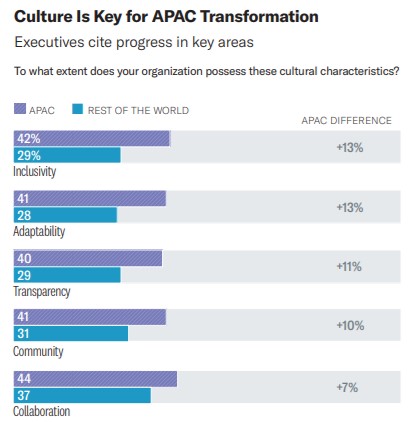 As government agencies and corporations have distinct drivers, the measure of success is going to be different even though they may face similar challenges of scale and technology. In the government space, the measure of success is driven by citizens. Agencies need to be inclusive to ensure wider access to their digital services and more participation of citizens.
As government agencies and corporations have distinct drivers, the measure of success is going to be different even though they may face similar challenges of scale and technology. In the government space, the measure of success is driven by citizens. Agencies need to be inclusive to ensure wider access to their digital services and more participation of citizens.
To create a culture that is conducive to organisations’ strategy, empowerment is critical. This is relatively more challenging in the Asia-Pacific (APAC) region given how diverse the region is. This diversity brings different layers of culture across the spectrum at a national, organisational and individual level.
Leaders need to be aware of the varying contexts and how it fits into what they are trying to achieve. To create an enabling environment, it is vital to have clarity of vision as well as to get the team onboard. From the cultural point of view, organisations need to create an atmosphere where people feel empowered to embrace the fast-paced change of technology and want to learn new tools and upskill themselves.
The entire situation has been suspended by the pandemic. In the new normal, remote working or hybrid working, has become the default – at least for the foreseeable future. When it comes to these new models, Donna acknowledged that there are trade-offs.
One of the downsides is the loss of real human interactions. Donna feels that organisations must intentionally create space and guidelines for the human aspect in online conversations. For example, Red Hat’s Labs invite teams to create a working agreement to define common ground rules, such as having a cameras-on policy and core working hours for distributed teams. They may also encourage people to use hand gestures during AV interaction, adopting a social contract that recognises the importance of non-verbal communication.
Besides acknowledging the downsides, Donna pointed out that the pandemic has been responsible, to a great extent, for making distributed working the norm. This, in turn, has meant that the metric for employee productivity has changed – organisations no longer assess employees’ productivity by merely the time they spend at work but by the real outcomes they deliver.
Without a doubt, leadership has a huge influence on culture. While she acknowledges that there is no universally accepted definition of leadership, it is a position of influence. Leadership, she says, is less about a position or role and more about modelling behaviours, empowering people, and fostering an enabling environment.
Leadership styles are shifting from managing change to facilitating change. The role is more about helping people become part of the decision-making process, to be adaptable, and to constantly evolve in response to ongoing change.
Information and knowledge is power. When information was less democratised and centralised with top management, people had to accept (at face value) what leaders said. However, as information becomes more widely accessible, the entire workforce can become part of the decision making process. Leaders are not expected to know everything, but are there to source, locate, validate and disseminate information that is beneficial to the organisations’ goals.
When organisations truly empower people – from a top-down and a bottom-up approach – everyone can be a leader and help contribute to the journey. In this way, leadership is not just a single charismatic leader, but a sense of collective responsibility to achieve common goals.
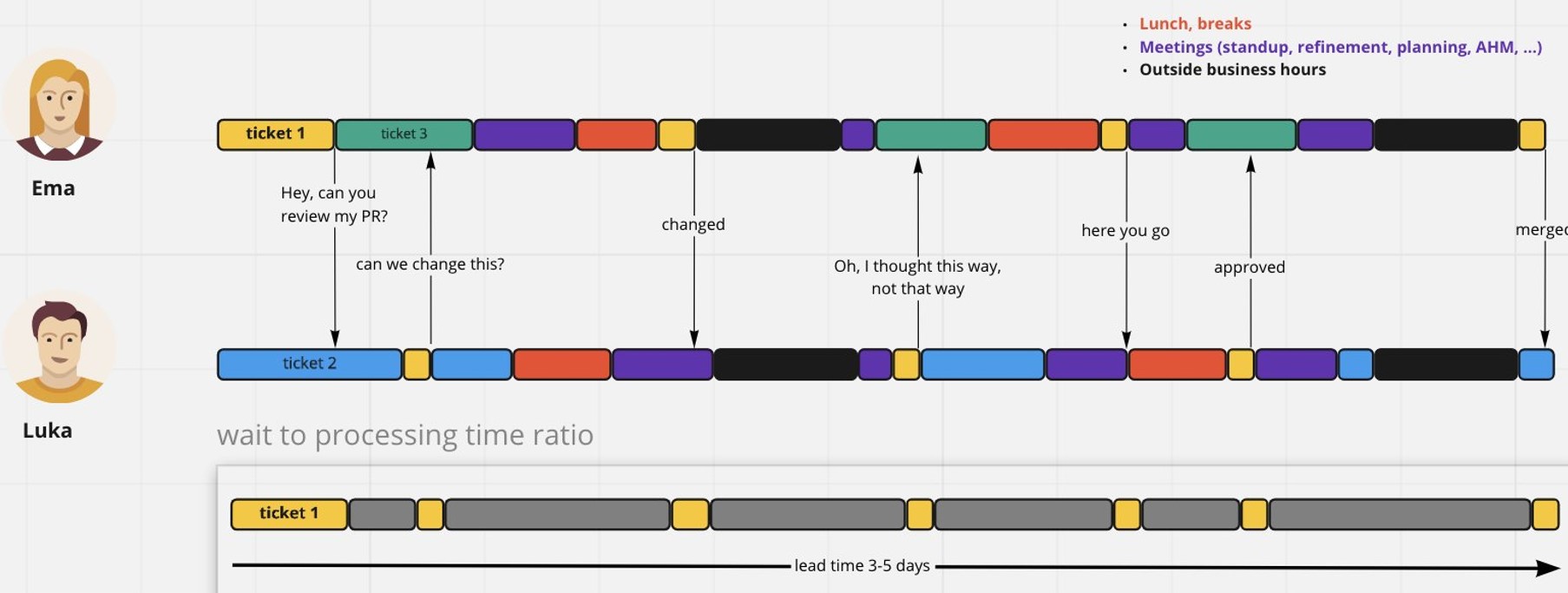 Another impactful practice that Open Innovation Labs adopt is “pairing”. Working together to finish a piece of work in parallel might take longer in the short term, but in the long run, it can be more effective. When organisations support people to work together more effectively, they see how significantly collaboration impacts outcomes.
Another impactful practice that Open Innovation Labs adopt is “pairing”. Working together to finish a piece of work in parallel might take longer in the short term, but in the long run, it can be more effective. When organisations support people to work together more effectively, they see how significantly collaboration impacts outcomes.
Donna revealed how Red Hat’s Open Innovation Labs has brought two revolutionary forces together – the technology of open source software and agile development methodologies. This is a paradigm-shifting idea.
Open source has traditionally been an asynchronous activity where people work independently online without real-time, in-person communications. On the other hand, agile methodologies have traditionally been co-located and time-boxed. Merging the two aspects builds on both their strengths, creating far more impactful outcomes.
Looking ahead, Donna believes we can all design our future. However, many people do not feel they have the freedom or capacity to do so. This is where the role of leaders is of the utmost importance. Good leadership will openly and freely empower people to achieve their potential. She firmly believes leaders should help staff define their goals and work together on the necessary steps to achieve them.
Donna’s perspective is in line with the concept of “Open Leadership” that Red Hat advocates. It involves connecting to others, extending trust, being transparent, being collaborative, and promoting diversity and inclusion. Open leaders invite cooperation and productive dialogue to create better solutions as well as empower others to share ideas and value solutions from a broad base of contributors.
In closing, Guna elaborated on the issue of leadership more deeply. He agrees with Donna that great results come from leadership and foundational values that permeate the organisational culture.
Guna is a firm believer in the concept of Level 5 Leadership that was popularised in a book, “Good to Great”. Level 5 refers to the highest level in a hierarchy of executive capabilities. Leaders at the other four levels in the hierarchy can produce high degrees of success but not enough to elevate companies from mediocrity to sustained excellence.
Guna compared the main difference between authoritarian and Open Leadership. Companies with an authoritarian style tend to have one distinctive leader that is almost synonymous with the company itself. Meanwhile, companies that adopt Open Leadership do not usually have a single leader that everyone can point to – the team effort is front-stage. Open Leadership allows like-minded people who have a common set of values to discuss ideas openly to create innovative solutions.
When it comes to organisational culture, there must be a climate for growth and collaboration that exist at all levels. Guna says he cannot understate how critical leadership style is to the success of an organisation. While most governments tend to have a strong, firm structure, Guna believes that change can happen by having the right leadership and organisational culture.



